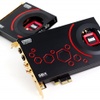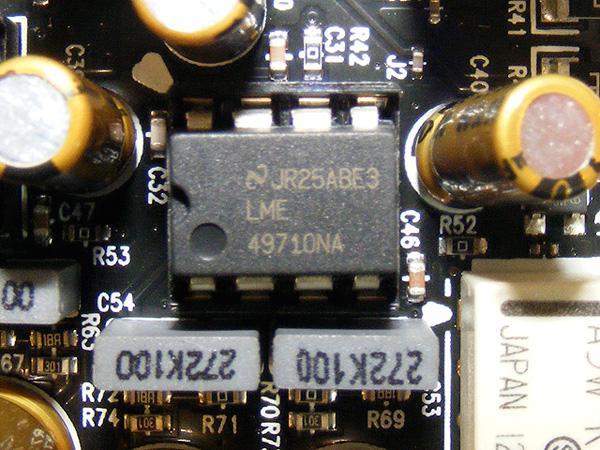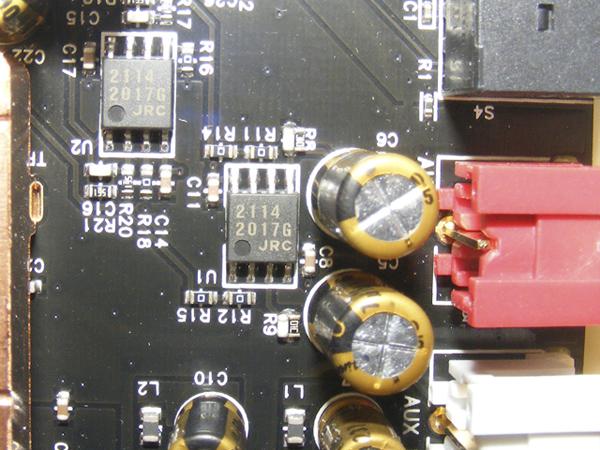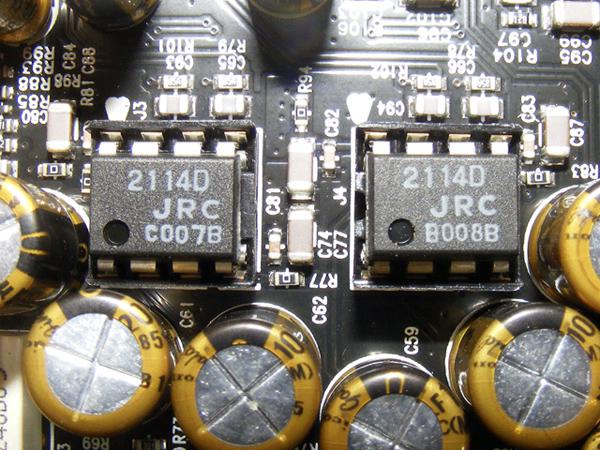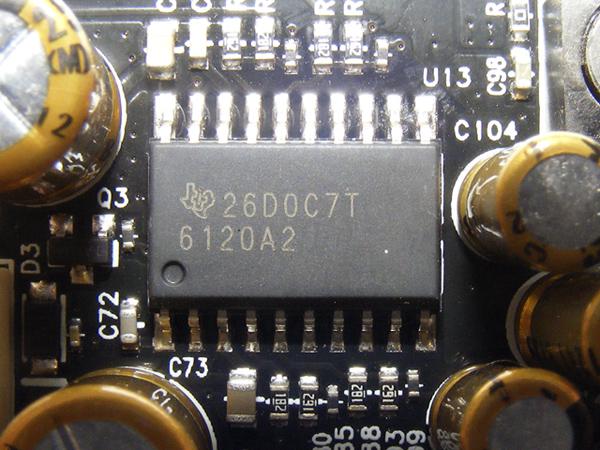Electronics Overview - OPAmp - Capacitors
Opamps
LME49710NA
The LM49710 opamps are being used as output buffers for the line outputs. These opamps are part of the ultra-popular LM/LME series opamps that have been seen on many modern soundcards, usually in the form of the LM4562NA/LME49720NA. However, these are the mono channel siblings. Many Designers and opamp users will typically prefer two mono opamps over their dual channel counterparts. The dual mono chips seem to sound better, offering cleaner channel separation and lower crosstalk. The LM49710NA’s are a great choice for the front channels of the new flagship card.
LME49710NA Specification Sheet – “http://www.ti.com/lit/ds/symlink/lme49710.pdf”
NJM2114D
The replaceable opamps are being used as Current (I) to Voltage (V) converters. The 2114 opamps are considered more generic, they are seen in many soundcards and other audio circuitry. Generally used as a low cost selection offering a great price to performance ratio. They are not a very high end opamps but not the bottom of the barrel either. They are more than acceptable for the circuits. They are used for all other positions on both input and output circuitry. They are found in surface mount form on main card and daughter card.
NJM2114D Specification Sheet – “http://semicon.njr.co.jp/eng/PDF/NJM2114_E.pdf”
Headphone Amplifier
This amplifier chip is popping up on many cards being built today and it is a solid choice given price/performance and board space. This amplifier reportedly offers 80mW in 600Ω and dynamic range and Signal to Noise Ratio (SNR) of 120dB.
TI 612A2 Specification sheet “http://www.ti.com/lit/ds/symlink/tpa6120a2.pdf”
Capacitors
In the simplest terms, capacitors are your filters, so high quality unit equates to high quality filtering. The ZXR uses higher grade capacitors, boasting Nichicon “Fine Gold” units, generally seen in high end “audiophile” components.
